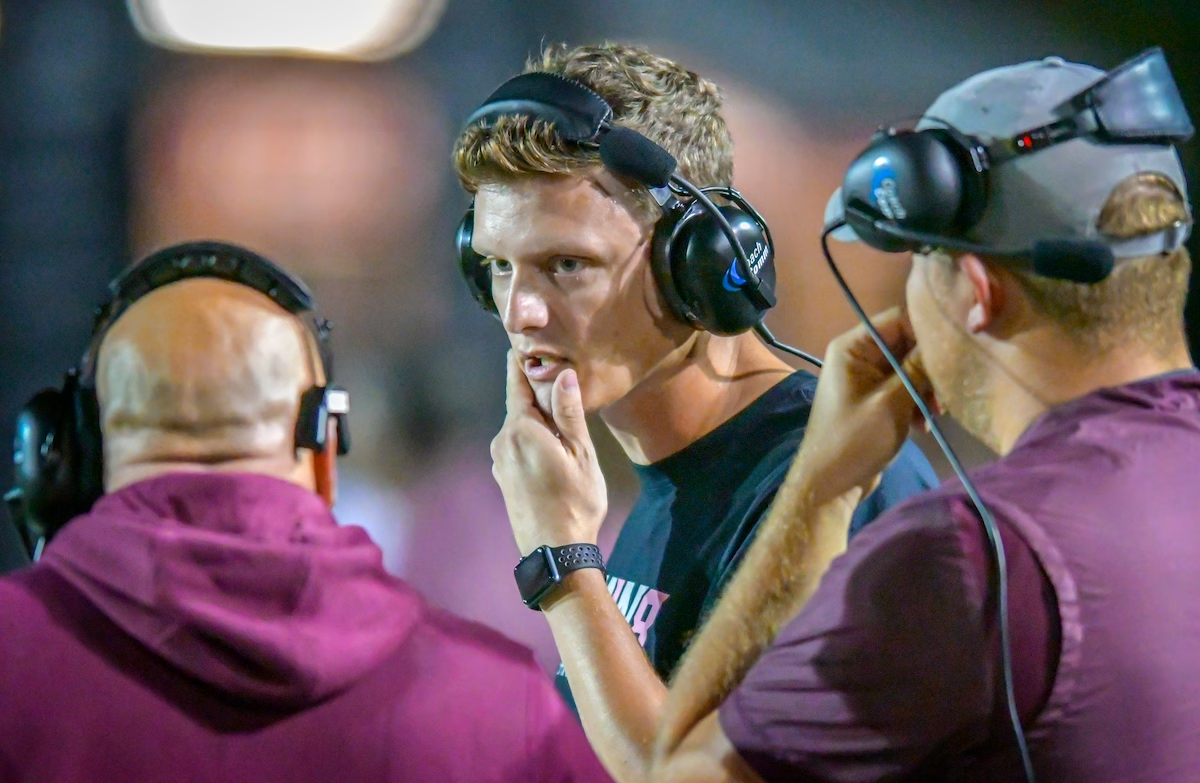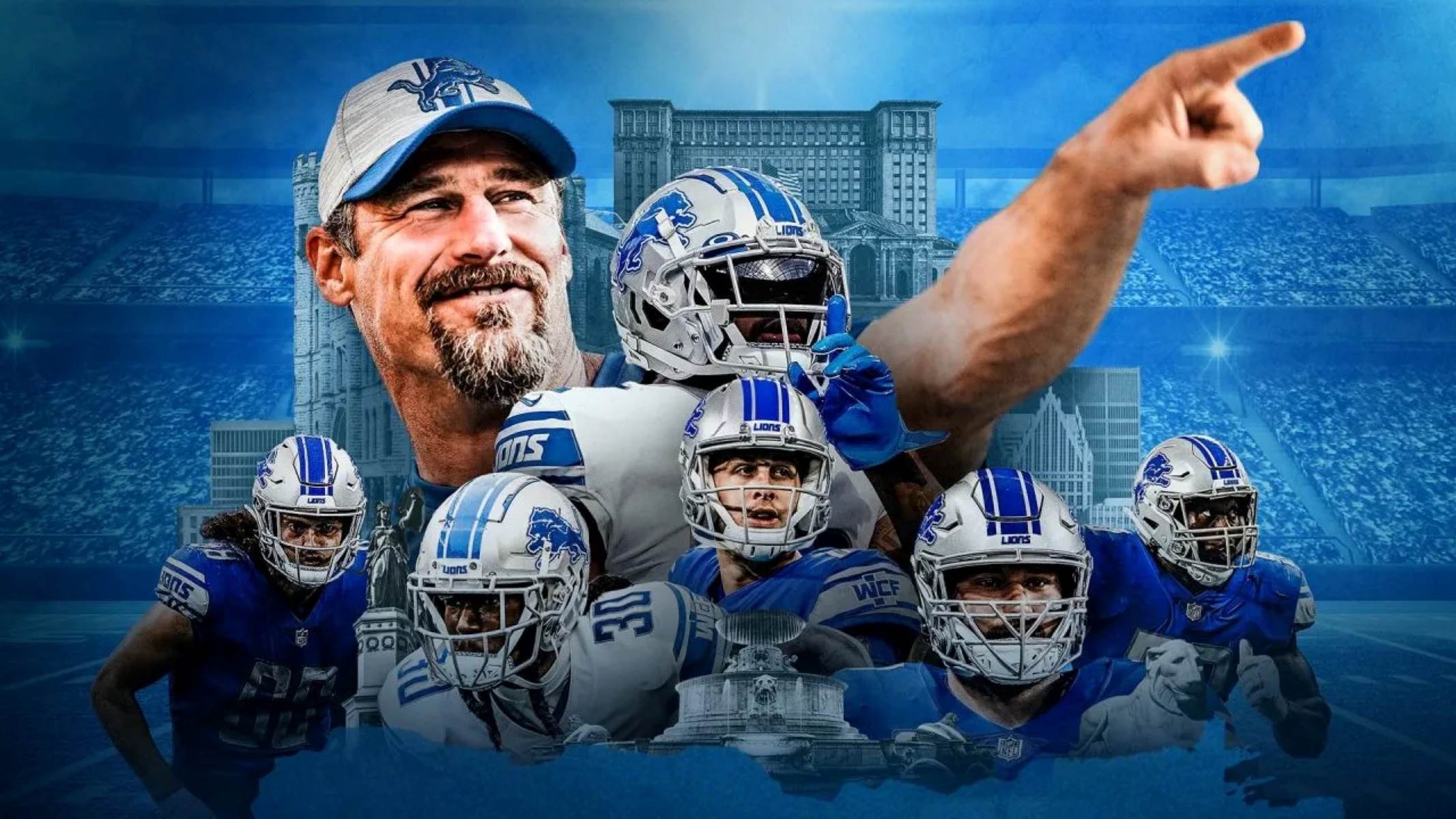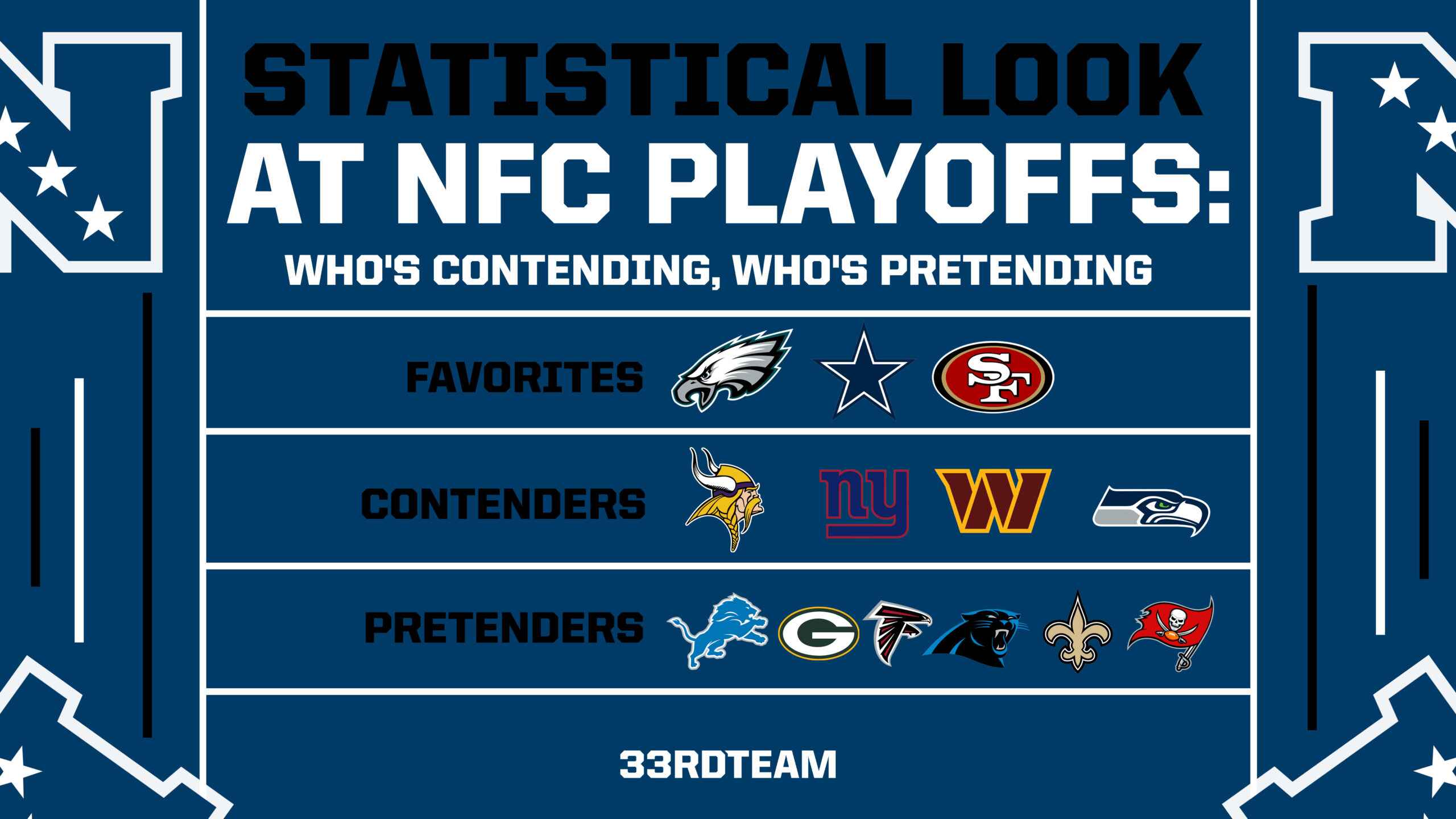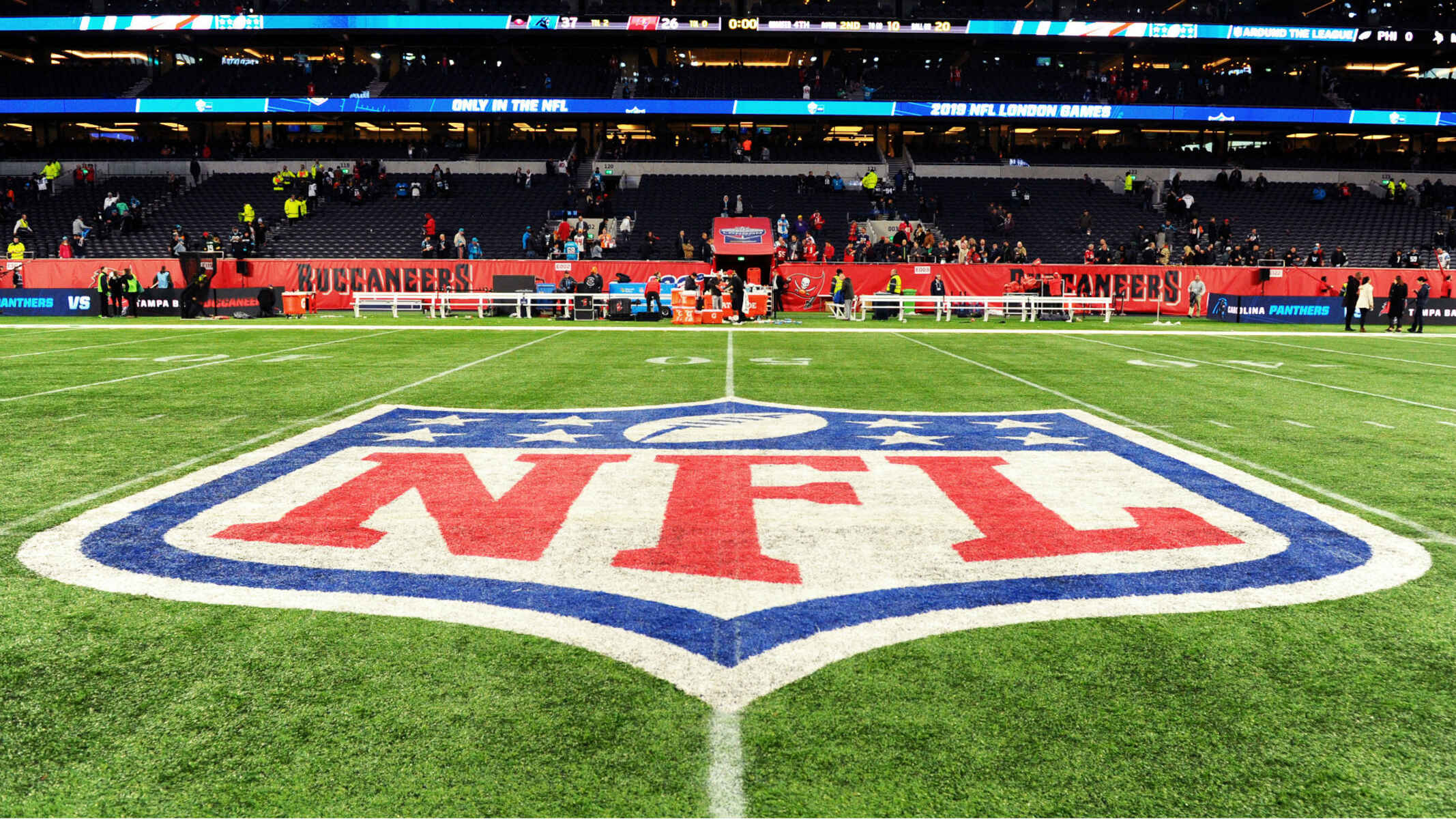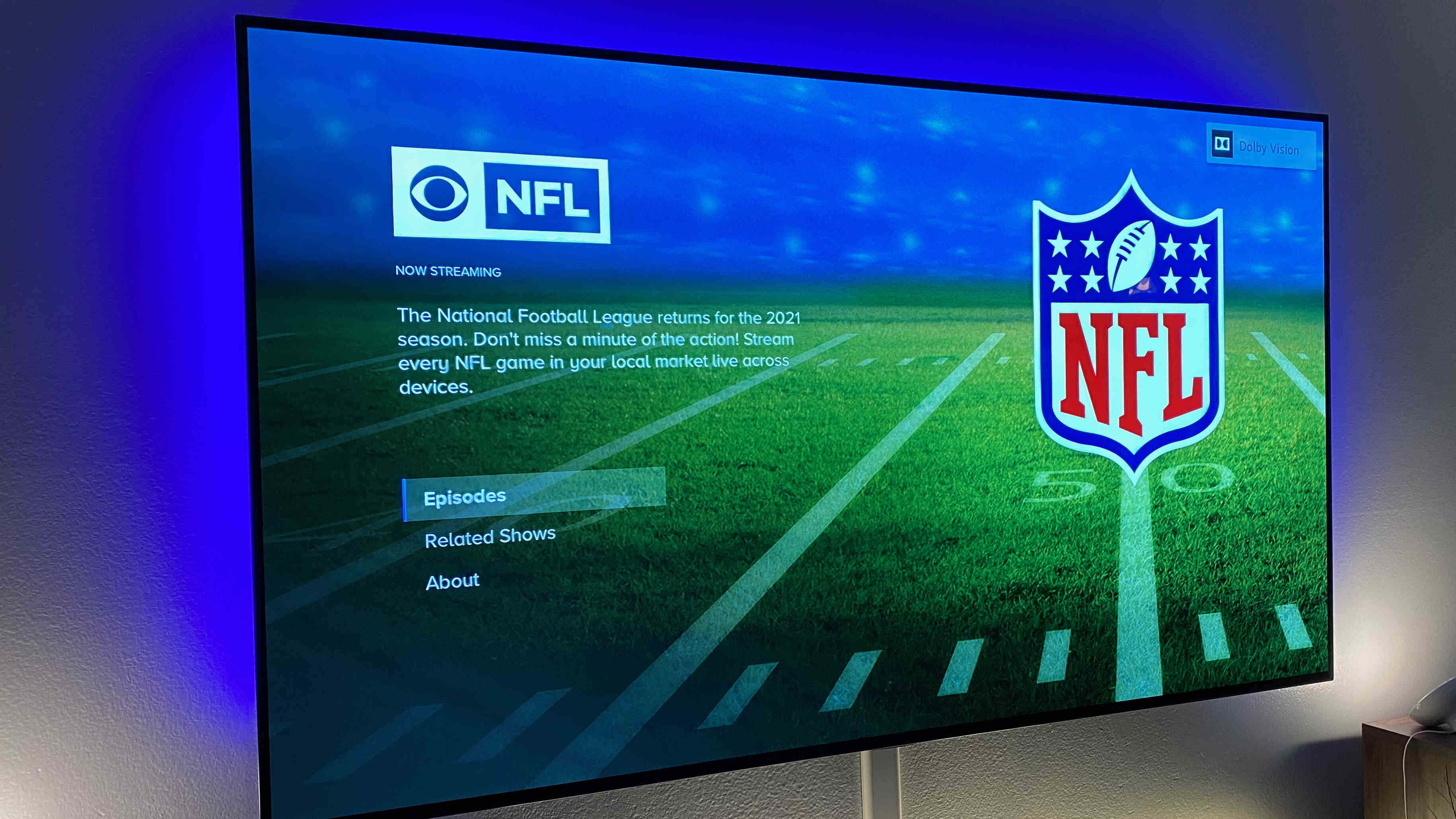Introduction
The football coach's headset is a vital tool that plays a crucial role in the coordination and communication of the coaching staff during games and practices. This piece of technology serves as the primary means of communication between coaches on the sideline, in the coaching booth, and with players on the field. The headset not only facilitates real-time strategizing and play-calling but also enables seamless coordination among the coaching staff, ensuring that everyone is on the same page.
In the fast-paced and high-stakes environment of football, effective communication is paramount. The coach's headset serves as the linchpin of this communication network, allowing coaches to relay crucial information, make strategic adjustments, and provide real-time feedback to players. It serves as a lifeline, connecting the coaching staff and players, and is instrumental in maintaining a synchronized and cohesive team effort.
Understanding the intricacies and significance of the football coach's headset is essential for players, fans, and aspiring coaches alike. By delving into the components, functionality, and best practices associated with coach communication through headsets, one can gain a deeper appreciation for the behind-the-scenes dynamics that contribute to the success of a football team.
As we explore the nuances of the football coach's headset, we will uncover the pivotal role it plays in shaping the outcomes of games, fostering effective teamwork, and maximizing the potential of every player on the field. The following sections will provide a comprehensive insight into the components of a football coach's headset, the intricacies of coach communication, and the challenges and best practices associated with this essential tool in the world of football coaching.
The Importance of the Headset in Football Coaching
The football coach's headset stands as a cornerstone of effective coaching in the dynamic and high-pressure environment of football. This technological marvel is not merely a communication tool but a linchpin that holds together the intricate web of strategizing, decision-making, and real-time adjustments that define the coaching process. Its significance is underscored by the pivotal role it plays in shaping the outcomes of games and practices, as well as in fostering seamless coordination among the coaching staff.
In the heat of a game, split-second decisions can make the difference between victory and defeat. The coach's headset enables instant communication between coaches on the sideline and those in the coaching booth, allowing for swift strategizing and play-calling. This real-time coordination is essential for adapting to the ever-evolving dynamics of the game and making strategic adjustments based on the unfolding scenarios.
Moreover, the headset serves as a vital link between the coaching staff and the players on the field. It enables coaches to relay crucial instructions, provide feedback, and make tactical adjustments, ensuring that every player is aligned with the team's strategy. This direct line of communication is instrumental in maximizing the team's efficiency and adaptability during the game.
In addition to its role during games, the coach's headset is equally indispensable during practices. It facilitates seamless communication among the coaching staff, allowing for the efficient planning and execution of drills, plays, and training regimens. This ensures that every practice session is optimized to enhance the team's skill set and strategic acumen.
Furthermore, the headset fosters a sense of unity and cohesion among the coaching staff, enabling them to function as a synchronized unit. It promotes collaborative decision-making, fosters a shared understanding of the game plan, and allows for the swift dissemination of critical information. This cohesive approach is essential for maintaining a harmonized coaching strategy and ensuring that every member of the coaching staff is aligned with the overarching goals of the team.
In essence, the football coach's headset is not just a piece of technology; it is the lifeblood of effective coaching. Its seamless integration into the coaching process is a testament to its indispensability in shaping the outcomes of games, practices, and the overall success of a football team. Understanding and appreciating the pivotal role of the coach's headset is fundamental to grasping the intricacies of football coaching and the dynamics that drive the sport forward.
Components of a Football Coach's Headset
The football coach's headset comprises several essential components that collectively form a sophisticated communication system tailored to the unique demands of coaching in the dynamic environment of football. Understanding the intricacies of these components is crucial for gaining insight into the functionality and effectiveness of the coach's headset.
1. Headphones
The headphones, a fundamental component of the coach's headset, serve as the primary auditory interface for coaches to receive communication from their counterparts in the coaching booth or other members of the coaching staff. These headphones are designed to provide clear and crisp audio, ensuring that coaches can accurately discern instructions, play calls, and real-time updates during the game.
2. Microphone
Equally vital is the microphone, which enables coaches to transmit their instructions, play calls, and feedback to other members of the coaching staff or directly to players on the field. The microphone's clarity and reliability are paramount, as it serves as the conduit through which critical information is relayed, ensuring that every message is conveyed with precision and immediacy.
3. Transmitter and Receiver
At the core of the coach's headset system are the transmitter and receiver units, which form the backbone of the wireless communication network. The transmitter, typically located in the coaching booth, broadcasts the audio signals to the receivers integrated into the coaches' headsets on the sideline. This seamless transmission of audio data ensures real-time communication, allowing for swift decision-making and strategic adjustments during the game.
4. Noise-Canceling Technology
Given the bustling and cacophonous environment of a football game, noise-canceling technology is an indispensable feature of the coach's headset. This technology filters out ambient noise, crowd roars, and other distractions, ensuring that coaches can focus on the clear and uninterrupted communication essential for effective coaching during high-stakes moments.
5. Durability and Comfort
The coach's headset is designed to withstand the rigors of the football environment, where it may be subjected to inclement weather, physical impact, and prolonged use. Additionally, comfort is a crucial consideration, as coaches often wear the headset for extended periods during games and practices. The design prioritizes both durability and comfort to ensure that coaches can rely on the headset throughout the duration of the game without discomfort or distraction.
In essence, the components of a football coach's headset are meticulously engineered to enable seamless, reliable, and effective communication among the coaching staff. The integration of advanced audio technology, robust construction, and ergonomic design underscores the pivotal role of the coach's headset in shaping the dynamics of football coaching and team coordination.
How Coaches Use Headsets to Communicate
In the fast-paced and high-stakes environment of football, coaches rely on headsets as their primary mode of communication to orchestrate the team's strategies and coordinate crucial decisions during games and practices. The seamless and effective use of headsets is instrumental in ensuring that the coaching staff operates as a synchronized unit, allowing for real-time communication and strategic adjustments.
During games, coaches utilize headsets to relay play calls, strategic adjustments, and real-time feedback to players on the field. The coaching staff, comprising coaches on the sideline and in the coaching booth, remains interconnected through the headsets, enabling swift communication and coordination of game plans. This real-time communication is pivotal for adapting to the evolving dynamics of the game and making strategic decisions based on the unfolding scenarios.
Furthermore, headsets facilitate instant collaboration among the coaching staff, allowing for the exchange of insights, observations, and critical information. This open line of communication fosters a shared understanding of the game plan and enables coaches to make well-informed decisions in response to the team's performance and the opponent's strategies.
In addition to game-day communication, coaches rely on headsets to conduct efficient and strategic practices. The headsets enable seamless coordination among the coaching staff, ensuring that drills, plays, and training regimens are executed with precision and efficiency. This real-time communication during practices allows coaches to provide immediate feedback, make on-the-fly adjustments, and optimize the team's performance during training sessions.
The use of headsets also extends to the coaching staff's collaborative decision-making process. Coaches leverage headsets to engage in strategic discussions, analyze game situations, and formulate effective game plans. This collaborative approach, facilitated by the headsets, ensures that every member of the coaching staff is aligned with the team's overarching goals and strategies.
In essence, the effective use of headsets by coaches transcends mere communication; it embodies the seamless coordination, collaborative decision-making, and real-time adaptability that define successful coaching in the dynamic realm of football. The headsets serve as the conduit through which the coaching staff operates as a synchronized unit, fostering a cohesive and strategic approach that maximizes the team's potential and performance.
This comprehensive integration of headsets into the coaching process underscores their pivotal role in shaping the outcomes of games, practices, and the overall success of a football team. Understanding and appreciating the nuances of how coaches use headsets to communicate is fundamental to grasping the intricacies of football coaching and the dynamics that drive the sport forward.
Challenges and Limitations of Coach Communication through Headsets
While coach communication through headsets offers unparalleled advantages in the realm of football coaching, it also presents a set of challenges and limitations that coaches must navigate to ensure effective communication and coordination. Understanding these challenges is crucial for comprehending the complexities of leveraging headsets in the dynamic and high-stakes environment of football.
1. Interference and Connectivity Issues
One of the primary challenges faced by coaches using headsets is the potential for interference and connectivity issues. In the bustling and electronically charged environment of a football stadium, wireless communication systems can be susceptible to interference from various sources, including other electronic devices, radio frequencies, and environmental factors. This interference can disrupt the clarity and reliability of communication, posing a significant challenge for coaches striving to relay crucial instructions and play calls during games.
2. Environmental Factors
The outdoor nature of football games exposes headsets to environmental factors such as inclement weather, wind, and crowd noise. These environmental elements can impact the effectiveness of headsets, potentially compromising audio clarity and causing discomfort for coaches wearing the headsets. Additionally, the physical wear and tear resulting from exposure to outdoor elements can pose durability challenges for the headsets, necessitating robust design and construction to withstand these environmental factors.
3. Battery Life and Maintenance
Headsets rely on battery power to sustain wireless communication throughout the duration of games and practices. Coaches must contend with the challenge of managing battery life to ensure uninterrupted communication, necessitating strategic battery management and contingency plans in the event of power depletion. Moreover, the maintenance of headsets, including battery replacement and overall upkeep, adds another layer of logistical challenge for coaching staff, requiring meticulous attention to detail to sustain the functionality of the headsets.
4. Learning Curve and Adaptation
Introducing headsets into coaching practices requires coaches and staff to adapt to the technological transition and familiarize themselves with the nuances of using this communication tool effectively. The learning curve associated with integrating headsets into coaching strategies can pose initial challenges, requiring patience, training, and acclimatization to maximize the benefits of this technology.
5. Regulatory Compliance and Protocols
The utilization of headsets in football coaching is subject to regulatory compliance and league-specific protocols. Coaches must adhere to established guidelines and limitations regarding the use of headsets during games, ensuring that they operate within the prescribed parameters set forth by governing bodies. Navigating these regulatory considerations adds a layer of complexity to the seamless integration of headsets into coaching communication.
Navigating these challenges and limitations is essential for coaches to harness the full potential of headsets as a communication tool. By addressing these obstacles through strategic planning, technological advancements, and adaptive strategies, coaching staff can mitigate the limitations and optimize the effectiveness of coach communication through headsets, ensuring seamless coordination and strategic decision-making in the dynamic realm of football coaching.
Best Practices for Effective Coach Communication using Headsets
Effective coach communication using headsets hinges on the implementation of best practices that optimize the functionality, reliability, and impact of this essential tool in the realm of football coaching. By adhering to these best practices, coaching staff can ensure seamless coordination, real-time adaptability, and strategic decision-making, thereby maximizing the potential of coach communication through headsets.
1. Pre-Game Testing and Preparation
Prior to game day, conducting comprehensive testing of the headsets is paramount. This includes verifying connectivity, audio clarity, and noise-canceling functionality to preemptively address any technical issues. Additionally, ensuring that backup headsets and batteries are readily available serves as a proactive measure to mitigate potential disruptions during the game.
2. Clear and Concise Communication
Coaches should prioritize clear and concise communication through headsets, employing succinct and unambiguous language to relay play calls, instructions, and feedback. This practice minimizes the risk of misinterpretation and ensures that critical information is conveyed with precision and immediacy, fostering efficient decision-making and player comprehension.
3. Strategic Battery Management
Strategic battery management is essential to sustain uninterrupted communication throughout the game. Coaches should devise a battery rotation system and monitor power levels to preemptively address potential battery depletion. Additionally, having designated staff members responsible for managing headset batteries ensures seamless communication continuity.
4. Environmental Adaptability
Adapting to environmental factors, such as crowd noise and inclement weather, is crucial for optimizing headset functionality. Coaches should leverage noise-canceling technology and ergonomic design features to mitigate the impact of environmental elements, ensuring that communication remains clear and uninterrupted amidst the dynamic backdrop of a football game.
5. Collaborative Decision-Making
Encouraging collaborative decision-making through headsets fosters a shared understanding of the game plan and promotes a synchronized coaching approach. Coaches should leverage headsets to engage in open dialogue, exchange insights, and collectively formulate strategic adjustments, harnessing the collective expertise of the coaching staff to optimize decision-making.
6. Continuous Training and Familiarization
Continuous training and familiarization with headset usage are instrumental in optimizing the effectiveness of coach communication. Providing coaching staff with ongoing training opportunities and familiarization exercises enhances their proficiency in using headsets, enabling them to leverage this communication tool to its full potential.
By embracing these best practices, coaching staff can elevate the effectiveness of coach communication through headsets, fostering seamless coordination, strategic adaptability, and collaborative decision-making. The implementation of these practices underscores the pivotal role of headsets in shaping the dynamics of football coaching and team coordination, ensuring that every game and practice is characterized by synchronized communication and strategic acumen.
Conclusion
In conclusion, the football coach's headset stands as a technological cornerstone that embodies the essence of effective coaching in the dynamic and high-stakes environment of football. From its pivotal role in facilitating real-time communication and strategic decision-making to its seamless integration into the collaborative fabric of coaching, the coach's headset serves as the linchpin that shapes the outcomes of games, practices, and the overall success of a football team.
The significance of the coach's headset is underscored by its multifaceted impact on the coaching process. It enables swift strategizing, play-calling, and real-time adjustments during games, fostering adaptability and responsiveness in the face of evolving game dynamics. Moreover, the headset serves as the vital conduit through which the coaching staff remains interconnected, fostering collaborative decision-making, shared understanding of the game plan, and seamless coordination.
The components of the coach's headset, including headphones, microphone, transmitter, receiver, and noise-canceling technology, collectively form a sophisticated communication system tailored to the unique demands of football coaching. These components, coupled with durability and comfort considerations, exemplify the meticulous engineering that underpins the functionality and reliability of the coach's headset.
While coach communication through headsets presents challenges and limitations, including interference, environmental factors, and battery management, navigating these obstacles through strategic planning and adaptive strategies is essential for maximizing the effectiveness of this communication tool. By adhering to best practices such as pre-game testing, clear communication, and collaborative decision-making, coaching staff can optimize the functionality and impact of the coach's headset.
Ultimately, the coach's headset transcends its technological essence, embodying the spirit of synchronized communication, strategic acumen, and collaborative coaching that defines successful football coaching. Its seamless integration into the coaching process underscores its indispensability in shaping the dynamics of football coaching and team coordination, ensuring that every game and practice is characterized by synchronized communication and strategic excellence.
Understanding and appreciating the nuances of the football coach's headset is fundamental for players, fans, and aspiring coaches, as it unveils the intricate web of communication, decision-making, and collaboration that underpins the success of a football team. As the game of football continues to evolve, the coach's headset remains an enduring symbol of effective coaching, seamlessly bridging the realms of technology and teamwork to propel the sport forward.







